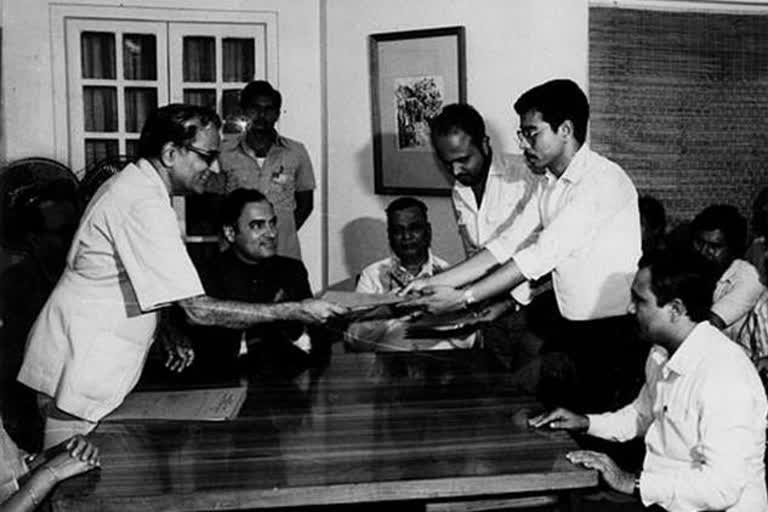New Delhi: Clause 6 of the Assam Accord is a regularly uttered and frequently heard word in Assam now. In the betel nut shop corners, in the bus-stops, in the ‘naamghors’ (village prayer halls) and in the sitting rooms, it occupies central stage in political conversations.
For anyone with just a passing interest in Assam and Northeast India, it will be difficult to comprehend the existential query Clause 6 poses. As would be the puzzle as to why after 35 years since the signing the Assam Accord (1985), it is still not clear as to who is indigenous in Assam and who is not.
And now, the high-powered body constituted by the Union home ministry is finally ready with its report on the implementation of Clause 6 of the Assam Accord and is likely to submit the same to Union Home Minister Amit Shah in a day or two.
According to multiple sources, the report has its fair share of dissenting notes especially from the powerful All Assam Students Union (AASU), the leading force of the anti-foreigner agitation (1979-1985) where more than 880 young lives were lost.
The main difference of opinion between the students’ body and the other members is on the issue of reservation of political seats from Parliament to Panchayat bodies and on the question of jobs.
“This is going to be a historic document that will decide the fate of the indigenous people of Assam. Let all of Assam know what the AASU demanded and the positions of the other committee members. It will be a record for posterity,” a source who is a committee member told ETV Bharat.
While the AASU wanted 100 percent reservation of both political representative seats and jobs for the indigenous people, the other committee members wanted 67 percent reservation excluding 16 percent for Scheduled Castes / Scheduled Tribes. On jobs, the other committee members sought 80 percent reservation for the indigenous against AASU’s demand for 100 percent reservation.
“The report is in broad agreement with what former Assam assembly speaker Pranab Gogoi had said in his report on the issue of the definition of an Assamese,” the source added.
It is understood that there is a broad consensus among all committee members on many other important issues, like seeking ILP (inner line permit) system for Assam and making 1951 as the cut-off year to determine who is ‘indigenous’ to Assam and who is not.
“There were discussions on whether the year 1826 should be made the cut-off year. It was not found feasible so we all agreed on 1951,” the source said. In 1826, the Treaty of Yandaboo was signed between the British and the Burmese.
By no means is it easy to comprehend the critical importance of Clause 6. This is mainly because of the unique history that the state has, and the peculiar way that Assam has come to be. For instance, one may be an Assamese for all practical purposes but would not be termed an ‘indigenous’ one.
Clause 6 report will determine, once and for all, whether a person in Assam is indigenous or not. This, in turn, will imply whether he or she will be entitled to “constitutional, legislative and administrative safeguards” aimed to “protect, preserve and promote the cultural, social, linguistic identity and heritage of the Assamese people.”
For the ruling BJP, Clause 6 may offer the way out to defuse the ballooning anger the party is facing over the Citizenship (Amendment) Act (CAA) that was pushed through in Parliament recently. That is why the issue is being treated with kid’s gloves.
Like India, Assam is a melting pot of various cultures and civilisations. Attracted by large open spaces with very fertile soil, people have migrated to Assam from all possible directions in the past.
People in the state, besides the original inhabitants, trace their origin to Southeast Asian countries, China, Myanmar, Bangladesh, West Bengal and north India. And these migrations happened during different periods of history further complicating the situation where heterogeneity rules.



